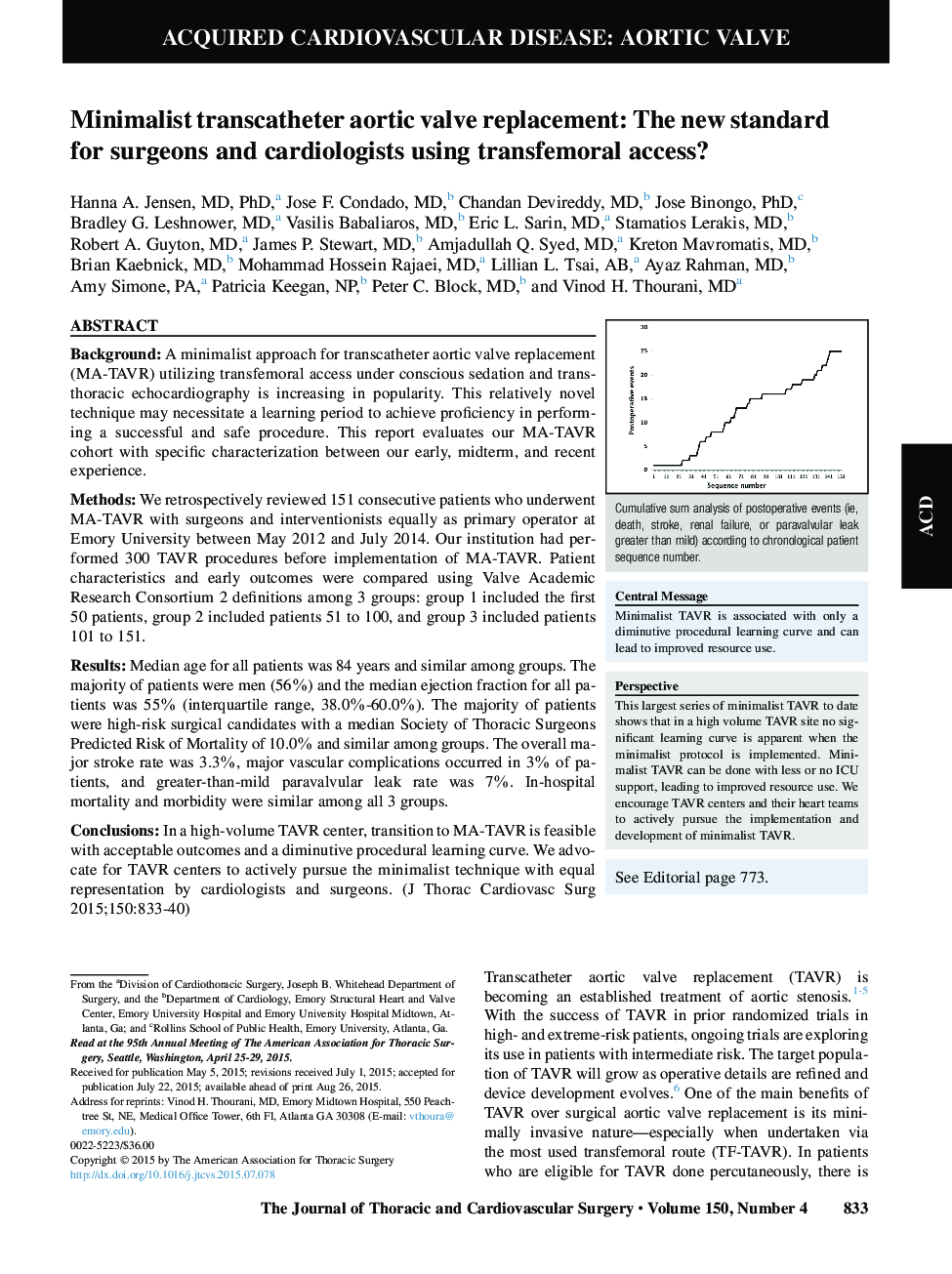| Article ID | Journal | Published Year | Pages | File Type |
|---|---|---|---|---|
| 2979052 | The Journal of Thoracic and Cardiovascular Surgery | 2015 | 8 Pages |
BackgroundA minimalist approach for transcatheter aortic valve replacement (MA-TAVR) utilizing transfemoral access under conscious sedation and transthoracic echocardiography is increasing in popularity. This relatively novel technique may necessitate a learning period to achieve proficiency in performing a successful and safe procedure. This report evaluates our MA-TAVR cohort with specific characterization between our early, midterm, and recent experience.MethodsWe retrospectively reviewed 151 consecutive patients who underwent MA-TAVR with surgeons and interventionists equally as primary operator at Emory University between May 2012 and July 2014. Our institution had performed 300 TAVR procedures before implementation of MA-TAVR. Patient characteristics and early outcomes were compared using Valve Academic Research Consortium 2 definitions among 3 groups: group 1 included the first 50 patients, group 2 included patients 51 to 100, and group 3 included patients 101 to 151.ResultsMedian age for all patients was 84 years and similar among groups. The majority of patients were men (56%) and the median ejection fraction for all patients was 55% (interquartile range, 38.0%-60.0%). The majority of patients were high-risk surgical candidates with a median Society of Thoracic Surgeons Predicted Risk of Mortality of 10.0% and similar among groups. The overall major stroke rate was 3.3%, major vascular complications occurred in 3% of patients, and greater-than-mild paravalvular leak rate was 7%. In-hospital mortality and morbidity were similar among all 3 groups.ConclusionsIn a high-volume TAVR center, transition to MA-TAVR is feasible with acceptable outcomes and a diminutive procedural learning curve. We advocate for TAVR centers to actively pursue the minimalist technique with equal representation by cardiologists and surgeons.
